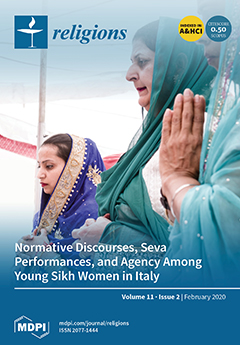Søren Kierkegaard is well-known as an original philosophical thinker, but less known is his reliance upon and development of the Christian tradition of the Seven Deadly Sins, in particular the vice of
acedia, or sloth. As
acedia has enjoyed renewed interest in
[...] Read more.
Søren Kierkegaard is well-known as an original philosophical thinker, but less known is his reliance upon and development of the Christian tradition of the Seven Deadly Sins, in particular the vice of
acedia, or sloth. As
acedia has enjoyed renewed interest in the past century or so, commentators have attempted to pin down one or another Kierkegaardian concept (e.g., despair, heavy-mindedness, boredom, etc.) as the embodiment of the vice, but these attempts have yet to achieve any consensus. In our estimation, the complicated reality is that, in using slightly different but related concepts, Kierkegaard is providing a unique look at
acedia as it manifests differently at different stages on life’s way. Thus, on this “perspectival account”,
acedia will manifest differently according to whether an individual inhabits the aesthetic, ethical, or religious sphere. We propose two axes for this perspectival account. Such descriptions of how
acedia manifests make up the first, phenomenal axis, while the second, evaluative axis, accounts for the various bits of advice and wisdom we read in the diagnoses of
acedia from one Kierkegaardian pseudonym to another. Our aim is to show that Kierkegaard was not only familiar with the concept of
acedia, but his contributions helped to develop and extend the tradition.
Full article





